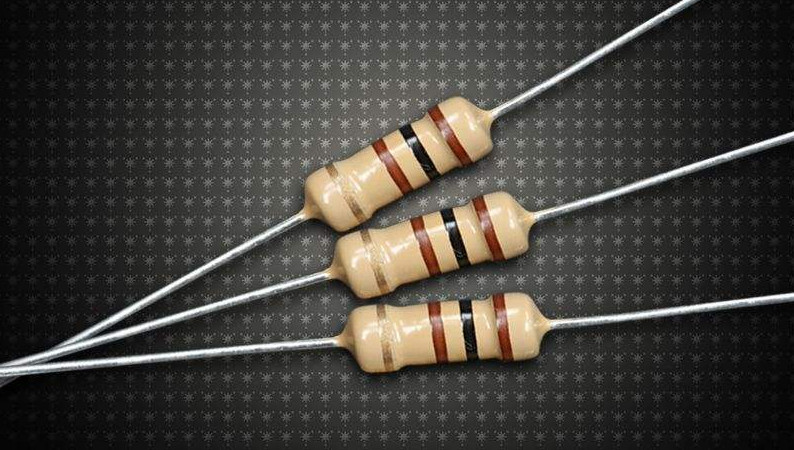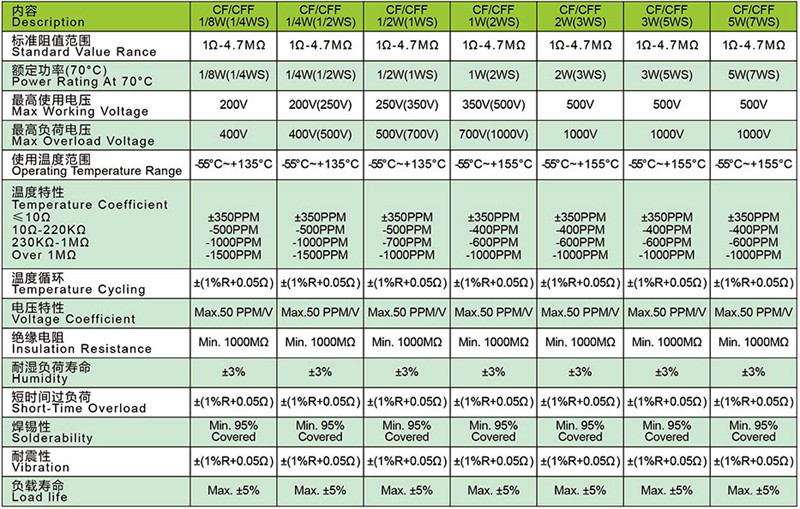Carbon film resistors are a type of electronic component commonly used in various circuits to control the flow of electric current. These resistors are made of a thin film of carbon, which is deposited on a ceramic or fiberglass substrate. The resistance value of carbon film resistors is determined by the thickness and width of the carbon film and the distance between the two metal leads that connect the resistor to the circuit. They are used in a wide range of applications, including audio equipment, power supplies, and control systems. This article will explore the characteristics, classification, function, internal structure, identification method, and rated value of carbon film resistors.
Characteristics of Carbon Film Resistor
Carbon film resistors have several characteristics that make them suitable for use in electronic circuits. Some of these characteristics are:
High Precision: Carbon film resistors are known for their high precision and accuracy. They have a tolerance range of around 1-5%, which means that their resistance value will not vary much from their nominal value.
Stability: Carbon film resistors are also very stable and do not change their resistance value over time, making them a reliable component in electronic circuits.
Low Noise: Carbon film resistors produce very low levels of noise, which is essential in high-frequency applications where even a small amount of noise can cause interference.
High-Temperature Coefficient: The temperature coefficient of resistance (TCR) of carbon film resistors is relatively high, which means that their resistance value changes with changes in temperature. However, this characteristic can be compensated for in some applications by selecting resistors with a suitable TCR.

Classification of Carbon Film Resistor
Carbon film resistors can be classified based on their power rating and resistance range. The power rating of carbon film resistors can vary from 0.125 watts to 5 watts. Similarly, the resistance range can vary from a few ohms to several mega ohms. Carbon film resistors can also be classified based on their package type, which can be axial or radial.

Basic Principles of Carbon Film Resistor
The basic principle of operation of carbon film resistors is based on the physical properties of the carbon film. When an electric current passes through a carbon film, the carbon atoms in the film resist the flow of electrons, creating a voltage drop across the resistor. The amount of voltage drop is proportional to the resistance value of the resistor and the current flowing through it. The resistance value of carbon film resistors can be calculated using Ohm’s law, which states that resistance equals voltage divided by current.
The Function of Carbon Film Resistor
The primary function of carbon film resistors is to limit the flow of electric current in an electronic circuit. This is achieved by introducing a resistance element that reduces the amount of current that can pass through the circuit. Carbon film resistors are often used in circuits requiring precise resistance values, such as in amplifiers and filters.
Internal Structure of Carbon Film Resistor
Carbon film resistors consist of a thin film of carbon that is deposited onto a ceramic or fiberglass substrate. The resistance value is determined by the thickness and width of the carbon film and the distance between the two metal leads that connect the resistor to the circuit. The carbon film is protected by a layer of epoxy or other insulating material, which prevents damage from external factors such as moisture or mechanical stress.

Identification Method of Carbon Film Resistors
Carbon film resistors are identified by a color code system that is used to indicate their resistance value and tolerance. The color code system consists of four bands placed on the resistor’s body. The first two bands indicate the first and second digits of the resistance value, while the third band indicates the multiplier. The fourth band indicates the tolerance of the resistor, which is the amount by which the actual resistance value may deviate from the nominal value. The color code system is standardized, so it is easy to identify a carbon film resistor’s resistance value and tolerance by looking at its color bands.

Rated Value of Carbon Film Resistor
Carbon film resistors are rated based on their power handling capability and maximum voltage rating. The power handling capability is expressed in watts, indicating the maximum amount of power the resistor can safely dissipate without damage. The maximum voltage rating is expressed in volts, indicating the maximum voltage that can be applied to the resistor without causing breakdown. It is essential to select a carbon film resistor with the appropriate power and voltage rating for the application to avoid damage or failure.

Conclusion
Carbon film resistors are essential to electronic circuits, offering high precision, stability, and low noise. Their classification based on power rating, resistance range, and package type makes them suitable for use in a wide range of applications. They are identified by a standardized color code system, and their rated values include power handling capability and maximum voltage rating. By understanding the function, internal structure, identification method, and rated value of carbon film resistors, designers and technicians can select the appropriate resistor for their application, ensuring optimal performance and reliability.
The Carbon Film Resistors from RisunSemi
RisunSemi recommends high-quality carbon film resistors to you. So click the link below to search for the carbon film resistors you need!
https://risunsemi.com/en/product/cf-0-25w-carbon-film-resistor-hunan-longjianda-electronic/
